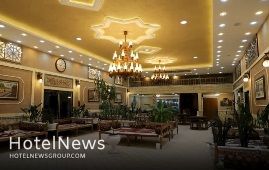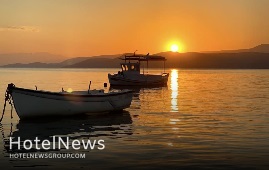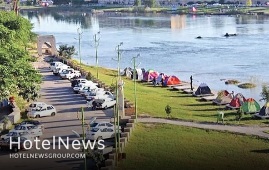
The challenges the hospitality industry has faced in the wake of COVID-19 reminds us how critical the housekeeping department’s role is to a hotel’s overall success. The urgency to prevent the spread of COVID-19 has accelerated change in our industry, including the need for new hygiene and cleaning processes. Even before the virus, 78% of hotel guests believed cleanliness to be the most crucial factor affecting their choice of where to stay, with hotel cleaning protocols moving up to the #1 top-ranked category for travel with COVID-19. As guests expect the highest standards of sanitation to feel at ease in a hotel and once again return to travel, operators worldwide need to work with their housekeeping teams to better prepare for the impacts of these new realities. By using this time to further analyze housekeeping practices, hotel leaders have an opportunity to take advantage of advancing technologies to more accurately plan for operational shifts that, at the end of the day, influence bottom-line results. Here are a few ways hoteliers can prepare their housekeeping team for success in 2021. 1. Create a Structured Cleaning Program Using Industry Best PracticesTo earn guest confidence, hotels will have to demonstrate that they provide a clean and safe environment and are following specific disinfecting protocols. As part of this new dynamic, the ability to develop and implement proven strategies to meet these new cleanliness standards will be critical to staying ahead of the competition. This is a good opportunity to establish clear step-by-step standard operating procedures (SOPs) for the protocols needed to enhance cleaning regimens. Creating a distinct checklist for each area of the property, including the lobby, restrooms, common areas, fitness center, and guest rooms, will help to ensure nothing gets missed. Hotels can look to their brand or management company for guidance on a structured program, or they can leverage one from trusted industry organizations like the AHLA’s Safe Stay program or Amadeus’ disinfecting housekeeping checklist, endorsed by the International Executive Housekeeping Association (IEHA). 2. Alter Schedules for Guest Room Cleaning Based on NeedMany hotels are shifting away from daily cleaning with automatic opt-out cleaning programs, leading to, in some cases, dirtier rooms upon departure. At the same time, the enforcement of new hygiene protocols, including the expansion of high touchpoints and frequency of cleaning, can increase the amount of time needed to spend in a room. Updated practices on the use of disinfectants and surface dwell times can additionally alter the flow in which rooms are serviced. So, what does this mean for housekeeping and operational teams? The rise in guestroom cleaning times can make forecasting labor and servicing pop-up requests a more complex endeavor. Lack of planning for additional time can also cause strain on staff, while last minute modifications to departure room schedules can impact room readiness. By tracking and analyzing the labor and resources needed to execute the tasks these rooms now require, hotels can adjust to new cleaning schedules, while identifying valuable areas for improvement that will ultimately increase both staff and guest satisfaction. 3. Monitor How Many Hours Guest Rooms are VacantAs new guidance is issued for businesses to mitigate the risk of COVID-19, the procedures within hotels also need to adapt. For instance, the American Hotel & Lodging Association (AHLA) recommends rooms be left vacant for 24-72 hours prior to or after cleaning if possible, while China requires hotels that host international guests to change linens and clean guestrooms and bathrooms daily. Consumers are increasingly calculating risks associated with travel and want to have complete transparency when it comes to COVID-19-specific protocols before even booking a hotel room. The ability to promise, then track and report the number of hours a room is vacant is a must in today’s business environment. 4. Understand Which Rooms are Not Being Serviced and WhyStreamlining productivity may mean having to leave rooms not serviced for the day. Although a part of daily housekeeping, one of the biggest challenges is measuring why a room was not serviced, or “dropped”. Perhaps there is a need to alter opt-out programs. Perhaps there is a need for more staff. Having the ability to identify, record, and flag rooms with a special service status like “dropped rooms” allows teams to truly understand why rooms are not being serviced. This process allows housekeeping managers to schedule staff effectively, as well as audit and reconcile room counts at the end of each day to optimize operations. With today’s lack of time and budget, gaining important insights into dropped rooms is pivotal to every housekeeping team’s success. 5. Leverage Automation to Drive ProductivityAs we evaluate new ways to face the challenges ahead, hotel leaders must consider how innovation can play a critical role in closing the gaps between team capabilities and achieving business goals. The right hotel technology can be a powerful tool in the decision-making process by reaching across the hotel’s ecosystem to orchestrate proactive tasks such as automating room assignments, schedule turnovers, and reprioritizing work. Gaining valuable insights from automation dashboards and reporting tools can also enable better decision making in a world of unknowns. Whether it’s wiping down frequently used areas like elevator buttons, delivering guest requests like soap or chargers, or managing dropped or vacant rooms, modernizing processes with a housekeeping solution can help to maximize operational capabilities while ensuring the highest standards are met. During times of unpredictability, the ability to intelligently automate the prioritization, communication, and dispatching of the entire housekeeping operation is more valuable than ever. This way, limited time and budget is spent where it is needed most. Resetting for 2021 and BeyondMoving forward, there will be no greater focus from a guest’s perspective than a hotel’s commitment to its cleaning initiatives. Resetting for success in 2021 and beyond means understanding how technology can significantly enhance our capabilities as individuals and designing new business procedures that support it. Reflecting this dynamic presents an opportunity to lead the way in delivering the processes needed to support both housekeeping teams and guest confidence in this new era of hospitality.
Create: Feb 9, 2021 Edit: Feb 9, 2021 Housekeeping
Japan's travel surplus in 2020 shrank to nearly one-fifth of the previous year, the first drop since the balance turned into the black in 2015, as international travel bans amid the coronavirus pandemic had a huge impact on the number of inbound visitors, government data showed Monday. The travel balance, which reflects the amount of money foreign visitors spend in Japan versus Japanese spending abroad, tumbled 79.2 percent to 562.1 billion yen ($5.3 billion) from a record 2.70 trillion yen in 2019 since annual comparable data became available in 1996, the Finance Ministry said in a preliminary report. Still, Japan's travel balance in 2020 logged black ink for the sixth straight year. In 2015, the balance saw its first black ink of 1.09 trillion yen since data compilation began in 1996, following a 44.4 billion yen deficit marked in 2014. Since 2011, when a massive earthquake, tsunami and the subsequent Fukushima nuclear crisis in northeastern Japan helped slightly widen a travel deficit to 1.30 trillion yen, the country's annual travel balance had continued to improve until 2019 with a steady increase in the number of foreign visitors. The reporting year's surplus in the current account, one of the widest gauges of international trade, fell 13.8 percent from 2019 to 17.70 trillion yen, its lowest level since 16.52 trillion yen recorded in 2015. It had increased 5.8 percent the previous year. In 2020, the goods trade balance saw a surplus for the fifth consecutive year, jumping almost eight-fold from the previous year to 3.05 trillion yen. The impact of a 15.0 percent decline in imports due to falls in prices of crude oil and other energy resources surpassed that of an 11.4 percent slip in exports amid sluggish demand for Japanese products such as cars and auto parts due to the pandemic. With the poor performance of the travel balance, services trade, which also includes cargo shipping, marked a 3.54 trillion yen deficit, following the first-ever surplus of 124.8 billion yen in 2019. It was the biggest red ink since the 3.81 trillion yen logged in 2012. The primary income balance, which reflects returns on overseas investments, showed a surplus of 20.72 trillion yen, the fourth largest since 1996, despite a 3.2 percent dip from a record 21.40 trillion yen in 2019, the first decline in four years. Many countries have imposed sweeping travel restrictions in response to the global spread of infections after the virus was first detected in China in late 2019. In 2020, 4.12 million foreigners visited Japan, which has promoted inbound tourism as a pillar of its growth strategy for revitalizing regional economies in recent years, plummeting a record 87.1 percent from 31.88 million in the previous year, according to the Japan Tourism Agency. Japan was originally scheduled to host the Tokyo Olympic and Paralympic Games last summer, but they were postponed for a year amid the pandemic. Largely consisting of tourists from China, South Korea and Taiwan, foreign visitors had kept expanding until 2019, when the figure hit a record high for the seventh year in a row. In December alone, Japan posted a current account surplus of 1.17 trillion yen, more than double the previous year's 544.9 billion yen to mark the 78th straight month of black ink. In the month, the country had a goods trade surplus of 965.1 billion yen and a services trade deficit of 343.5 billion yen. Primary income registered a surplus of 649.2 billion yen.
Create: Feb 8, 2021 Edit: Feb 8, 2021 International News
The Marriott Dallas Uptown team is excited to announce the appointment of Robbie Tawil as General Manager of the hotel property. Tawil has more than 35 years of experience with Marriott and the hospitality industry, including previous leadership roles in management and operations. Thrilled to open the 14-story, 255 guestroom hotel, Tawil will lead Marriott into the future, opening the first Marriott property with the latest generation room design. He is well equipped to lead his team and has done so successfully in the past. During his tenure with Marriott, Tawil has served as General Manager of the Marriott Conference Center in Norman, Oklahoma, General Manager of the Worthington Renaissance, Director of Operations at the Dallas Renaissance, Director of Food and Beverage at the Worthington in Fort Worth and Director of Operations at Dallas Marriott Downtown to name a few. Despite working with properties across the country, Tawil is excited to be working again in his hometown of Dallas. “Dallas has always been my home and I am elated to be opening a hotel in my own backyard,” said Tawil. “Marriott Dallas Uptown has so much to offer the burgeoning Uptown district. We are looking forward to meeting and serving our neighbors in the surrounding communities and welcoming travelers visiting Dallas from outside our city.” Also joining the Marriott Dallas Uptown team is Juan Pablo Silva as Executive Chef of Good Graces, the hotel’s restaurant. Chef Silva’s passion for food was born while cooking with his grandmother as a child in his hometown of Lima, Peru. He furthered his knowledge at Le Cordon Bleu Peru, where he graduated with a Culinary Arts and Hotel Management degree. Chef Silva has helped manage the culinary program for the largest Ritz-Carlton in the world, The Ritz-Carlton Abu Dhabi Grand Canal, where he served as the Executive Sous Chef. After three years in Abu Dhabi, Chef Silva became the Executive Sous Chef of the Ritz-Carlton in Dallas and then Executive Chef. He is honored and excited to take on the challenge of opening Good Graces, a modern American Brasserie. “The menu I’ve created for Good Graces will truly highlight each place I’ve cooked and learned from,” said Chef Silva. “From home-cooking in my grandmother’s kitchen in Peru to fine dining at the Ritz, this menu will be the perfect balance of each.”
Create: Feb 7, 2021 Edit: Feb 7, 2021 International News
Officials of Shaner Hotels, an award winning, international hotel owner, operator and developer, today announced the grand opening of the 145-room SpringHill Suites by Marriott Columbus Dublin located in Bridge Park. Shaner will operate the hotel in a partnership with ownership, Crawford Hoying, a large-scale real estate developer headquartered in Central Ohio. The Springhill Suites by Marriott Columbus Dublin provides the freshest hotel choice in Dublin’s Bridge Park, a new development giving an urban feel to this upscale suburb,” said Plato Ghinos, president, Shaner Hotels. “The hotel provides an all-suite option that includes complimentary breakfast – providing a reliable, refreshing and unexpected choice in the Dublin market. Our staff will focus on sales, service and style to bring the best in customer service to our guests.” Situated in the heart of downtown Dublin at 4475 Bridge Park Avenue, SpringHill Suites is conveniently located near local attractions such as the Columbus Zoo & Aquarium, the highly anticipated Riverside Crossing Park and only minutes to downtown Columbus. The hotel is surrounded by numerous walkable dining and entertainment options provided by the Bridge Park neighborhood. The hotel also provides multiple amenities for travelers, including a 24/7 fitness center, 840 square feet of meeting space, a complimentary breakfast buffet, a lobby bar, multiple outdoor lounging spaces and suite-style rooms designed to fuse form and function, equipped with separate areas to both work and relax. These stylized guest rooms are furnished with an oversized work area, a phone with voicemail, free Wi-Fi, a mini-refrigerator, a microwave oven, a trundle sofa bed and Smart TV entertainment. “At the rate in which Bridge Park is growing, the demand for another hotel was obvious,” said Brent Crawford, founder and principal, Crawford Hoying. “We couldn’t be more appreciative of our continued partnership with Shaner and the fantastic hospitality provided at each of the hotels within our developments. We’re confident that Springhill Suites will be no exception.” “We continue to seek opportunities in strong primary and secondary markets with new products surrounded by multiple demand generators,” Ghinos noted. “While the pandemic has hit the travel and hospitality industries particularly hard, we believe we see the light at the end of the tunnel with the recent arrival and deployment of the vaccines. Brand new hotels such as this will hold the lead position as travelers begin their return to both business and leisure travel in the weeks and months to come.”
Create: Feb 7, 2021 Edit: Feb 7, 2021 International News
Revenue loss in the international tourism sector in 2020 caused by a decrease in travelers crossing borders is estimated at $1.3 trillion, on the back of strict travel bans imposed by countries amid the coronavirus pandemic, a U.N. body said. Last year's international arrivals fell by one billion, or 74 percent, from 2019, ensuring that the overall estimated damage was over 11 times larger than in 2009 in the wake of the global financial crisis, according to a recent press release by the World Tourism Organization, a specialized agency of the United Nations. Due to the economic fallout from the virus spread, 100 to 120 million people have been put at risk of losing their jobs in the tourism industry, the Madrid-based body said, adding that many of them are from small and midsized business operators. "Global tourism suffered its worst year on record in 2020," the agency, also known as UNWTO, said in the news release, citing an "unprecedented fall in demand and widespread travel restrictions" to prevent the virus from further spreading. By region, Europe saw the largest drop in absolute numbers, with overseas arrivals down 500 million, or 70 percent, from the previous year. Meanwhile, those in Asia and the Pacific nations tumbled by 300 million, marking the sharpest decrease at 84 percent. On a percentage basis, the Middle East and Africa followed with a 75 percent plunge each, with the North and South Americas experiencing a 69 percent sink. As for 2021, a UNWTO panel of experts survey showed 45 percent of respondents forecast the situation will become better, while 30 percent predicted a deterioration, according to the press release. The remaining 25 percent expected a similar performance to 2020. The survey also showed that 43 percent think the tourism industry will rebound to pre-pandemic levels in 2023, with 41 percent saying it will happen in 2024 or later. UNWTO said that it expects the "gradual rollout of a COVID-19 vaccine" to bring about a recovery in consumer sentiment and eased travel restrictions, making travel relatively normal, albeit at a slow pace, during 2021. "While much has been made in making safe international travel a possibility, we are aware that the crisis is far from over," said Zurab Pololikashvili, secretary general of UNWTO. "The harmonization, coordination and digitalization of COVID-19 travel-related risk reduction measures, including testing, tracing and vaccination certificates, are essential foundations to promote safe travel and prepare for the recovery of tourism once conditions allow," the agency's chief added. Since first detected in the central Chinese city of Wuhan in late 2019, the virus has continued to spread globally and has resulted in over 105 million infection cases and more than 2.3 million deaths, according to data compiled by Johns Hopkins University.
Create: Feb 7, 2021 Edit: Feb 7, 2021 International News
A total of 43 tourism-related projects, worth 645 billion rials ($15.3 million at the official exchange rate of 42,000 rials per dollar), are scheduled to come on stream across the central Iranian province of Yazd on the occasion of Fajr cerebrations (Jan. 31- Feb. 10, marking the victory anniversary of the Islamic Revolution). Nineteen eco-lodge units, two traditional accommodation centers, seven traditional restaurants, two tourist complexes as well as seven projects in the field of cultural heritage, and six projects in the field of handicrafts will be inaugurated, a provincial tourism official said on Thursday. The mentioned projects will come on stream in different cities across the province including Bafq, Taft, Ardakan, Meybod, and Mehriz, Mohammad Mirshamsi added. The projects are expected to generate 247 job opportunities for the locals after being inaugurated, the official added. In July 2017, the historical structure of the city of Yazd was named a UNESCO World Heritage. Wedged between the northern Dasht-e Kavir and the southern Dasht-e Lut on a flat plain, the oasis city enjoys a very harmonious public-religious architecture that dates from different eras. With its winding lanes, forest of badgirs (wind catchers), mud-brick houses, atmospheric alleyways, and centuries of history, Yazd is a delightful place to stay, referring to as a ‘don't miss’ destination by almost all travel associates in the region. Yazd Jameh Mosque, Dowlatabad Garden, the Yazd Atash Behram, also known as Atashkadeh-e Yazd, Towers of Silence, and adjacent desert landscape are among its tourist sites.
Create: Feb 6, 2021 Edit: Feb 6, 2021 Regional News
Iran’s southeastern Sistan-Baluchestan province has lost 1,440 billion rials ($34.2 million at the official exchange rate of 42,000 rials per dollar) in earnings from tourism as many potential visitors stay away due to the impact of the coronavirus, according to Alireza Jalalzaei, the provincial tourism chief. “Sistan-Baluchestan is a four-season travel destination and even though the province holds vast tourism capacities, it has taken some 1,440 billion rials hit from the coronavirus outbreak from mid-Esfand 1398 (early March 2020) to the end of the month Dey (January 19),” the official said on Wednesday. The official noted that Sistan-Baluchestan has set sights on [a significant] tourism development, and its travel infrastructure has been drastically extended over the past couple of years. “From the year 1396 (2017) onwards, the number of travel infrastructure in Sistan-Baluchestan has raised from 40 to 200 ones…. Nowadays tourism of this province has come to fame and distinction,” he explained. Elsewhere in his remarks, the official pointed to various tourism campaigns being launched over the past couple of years, adding the campaign ‘Let’s see Sistan, let’s hear Baluchestan’ has taken a noticeable impact on the tourism thrive of the province mainly by the means of on-line programs. “Despite all the bottlenecks, the province’s tourism has not been forced to shut….” “For instance, the occupancy rate of hotels in [the city of Chabahar] is [currently] more than 90 percent….. and currently, some 100 to 110 ecolodge unites are active across the province,” the official said. Last year, Cultural Heritage, Tourism, and Handicrafts Minister Ali-Asghar Mounesan said that the development of the travel industry across Sistan-Baluchestan province is among the top priorities for the ministry. “I am interested in Sistan-Baluchestan, and the development of this province is a priority for this ministry and the government,” the minister stated. “The majority of my travels during my tenure has been to Sistan-Baluchestan, which I consider it as a safe province with significant values in terms of culture, history, handicrafts, and tourism.” The collective province -- Sistan in the north and Baluchestan in the south -- accounts for one of the driest regions of Iran with a slight increase in rainfall from east to west, and an obvious rise in humidity in the coastal regions. In ancient times, the region was a crossword of the Indus Valley and the Babylonian civilizations. The province possesses special significance because of being located in a strategic and transit location, especially Chabahar which is the only ocean port in Iran and the best and easiest access route of the middle Asian countries to free waters. The vast province is home to several distinctive archaeological sites and natural attractions, including two UNESCO World Heritage sites, namely Shahr-e-Soukhteh (Burnt City) and Lut desert.
Create: Feb 6, 2021 Edit: Feb 6, 2021 Regional News
Greek Prime Minister Kyriakos Mitsotakis forecast a strong rebound in tourism in the summer of 2021, saying speedy vaccination drives in key markets for Greece, including Britain and Israel, will pave the way for tourists to return despite the current industry’s gloom, according to a report out of Reuters on Thursday. Tourism, which accounts for about 20 percent of the Greek economy and directly employs one in five workers, collapsed last year as the coronavirus pandemic sent its revenues slumping to 4 billion euros from a high of 18 billion in 2019, according to the report. Since last summer, when the pandemic subsided across Europe, the virus has surged once again, triggering renewed lockdowns and travel restrictions and pushing the region’s death toll above 750,000. Vaccines are now making their way through the most critical populations but the supply is lagging all over the world. “I am a realist, but I am also cautiously optimistic that we will do much better than last year,” Mitsotakis told Reuters. The Prime Minister also defended a decision to coordinate EU member states’ vaccine purchases through the European Commission, saying the bloc’s smaller countries would have faced serious problems negotiating deals on their own.
Create: Feb 5, 2021 Edit: Feb 5, 2021 International News
Iran seeks to register ancient Siraf port and several other southern seaports on the UNESCO World Heritage list in near future, Cultural Heritage, Tourism and Handicrafts Minister Ali-Asghar Mounesan has said. “We are developing a dossier [to be submitted to UNESCO] for the global registration of Siraf and several other important ports, [which are dotted across Bushehr province] in the southern coastal strip of the country,” Mounesan said on Tuesday. “The noble people of Bushehr should be waiting for the registration news,” Mounesan noted. He made the remarks during his visit to Bushehr, which is one of the most significant historical regions along the Persian Gulf, embracing significant monuments from the Elamite, Achaemenid, Parthian, and Sassanid eras. The historical port of Siraf was the most important Iranian port from the Sassanid period to the 4th century AH. It bears plentiful evidence of Persian mastership and genius in seafaring, international relations, and interaction with other near and far cultures and civilizations. Between 1966 and 1973, the British Institute of Persian Studies conducted seven seasons of excavation and survey at Siraf, which was a major city on the Iranian shore of the Persian Gulf that played a leading role in the network of maritime trade that supplied Western Asia with the products of India, the Far East, and Eastern Africa between 800 CE and 1050. Siraf had a population of about 300,000 during the early Islamic era and this fact shows that it was a large city. However, today, just about 7,000 people live in Siraf in a small area. The historical and architectural monuments of Bushehr include Islamic buildings like mosques and praying centers, mansions, old towers, castles, as well as gardens. Bushehr province is also home to various archaeological mounds including Tall-e Khandaq with Sassanid architectural style, Tall-e Marv located near an Achaemenid Palace, and Qajar era Malek al-Tojar Mansion. Traveling to the Persian Gulf region would be an experience that you probably haven’t even considered. While you’ve been planning your Iranian sojourn around the jewels of the country’s rich history (Isfahan, Shiraz, Yazd), to the southeast the Persian Gulf is equally deserving. Explore the magnetic islands of Kish, Qeshm, and Hormuz, which are absurdly easy to combine and are altogether different. While Kish is unashamedly glam and glitzy, Qeshm and Hormoz are refreshingly void of large-scale development and offer a chance to glimpse a more traditional way of life – not to mention an array of geological wonders. Along the coast, soak up the vibes of lively Bandar Abbas and make a beeline for the delightful town of Kong, whose historical center is peppered with charming old houses and monuments.
Create: Feb 5, 2021 Edit: Feb 6, 2021 Regional News
JW Marriott Hotel Shanghai Fengxian has opened, becoming the fiftieth Marriott International hotel to open in the city. Located on Hangzhou Bay in the Fengxian seaside district, just an hour’s drive south of metropolitan Shanghai, the new hotel promises to be a sophisticated and luxurious. “We are delighted to celebrate the opening of the 50th property in Shanghai, a testament to the phenomenal growth of Marriott International in this region,” said Henry Lee, president, Greater China, Marriott International. “Across Greater China, there are now over 400 Marriott hotels spanning 23 brands in more than 90 cities, indicating our confidence in the strong growth of the travel market in China. “We look forward to expanding our portfolio further, and to offer distinctive and personalized experiences to travellers here.” Fengxian is a suburban district south of Shanghai known for its rustic beachfront areas, national forest park and the old town itself, a popular weekend destination for Shanghai residents. JW Marriott Hotel Shanghai Fengxian overlooks the nearby Jianhai Lake, a wetland that connects Huangpu River and the East Sea. Designed by international design company PLD, the hotel’s style narrative is inspired by its natural surroundings, with its exterior imagined as the legendary Roc bird. Dining options at JW Marriott Hotel Shanghai Fengxian include three distinctive restaurants and a bar, with menus featuring freshly harvested produce from the hotel’s own onsite garden, JW Garden. “We are absolutely thrilled to welcome this new addition of JW Marriott in Shanghai, the fourth JW Marriott to open in this world-class city,” said Jennie Toh, vice president, brand marketing and brand management, Asia Pacific, Marriott International. “With 19 distinctive brands operating in Shanghai, we are poised to offer endless choices and curated experiences for every guest through the breadth of our portfolio.”
Create: Feb 4, 2021 Edit: Feb 4, 2021 International News
The Jordan Tourism Board has partnered with workspace operator Venture X to launch a dedicated accelerator for tourism start-ups. The accelerator will be a “highly selective, equity-based three-month programme for the most promising technology start-ups or pre-scale-ups that can power the travel and tourism industry”, according to a statement from the tourism board on Wednesday. “This partnership is a response to the challenges ahead,” Abdul Razzaq Arabiat, the board's managing director, said. The accelerator programme is looking for innovative companies that are developing ways to “future-proof” Jordan’s travel and tourism industry, the statement said, as tourism companies look to rebound in the wake of Covid-19. The collapse in international travel due to the pandemic led the global tourism industry to lose $1.3 trillion in export revenue, almost 11 times more than the loss recorded during the 2008 global economic crisis, according to the UN World Tourism Organisation. Companies selected to take part will undergo a three-month intensive programme to identify a potential pilot project and scope, followed by three months of implementation working alongside the top 10 industry partners, the statement added. “The pandemic is going to change the tourism industry,” Yousef Hamidaddin, managing partner of Venture X, said. “Innovative solutions will allow people to continue to travel and explore, which represents an opportunity for entrepreneurs and start-ups.” Jordan was chosen by Lonely Planet as the Most Welcoming Destination of 2021. The country reopened to travellers in September 2020 after restrictions due to Covid-19. The tourism industry contributes 13 per cent to 15 per cent of the country’s gross domestic product and employs almost 60,000 people. The pandemic came months after a record-breaking year for tourism, with the kingdom attracting one million visitors and generating 4.1 billion Jordanian dinars ($5.8bn) in 2019.
Create: Feb 4, 2021 Edit: Feb 4, 2021 International News
Well-planned travels during the Persian New Year (Noruz) holidays, which will start on March 20, would be possible in close coordination with the National Headquarters for Coronavirus Control, the deputy tourism minister said on Tuesday. In order to create social vitality during the holidays, the ministry has set some rules for possible Noruz trips to control and monitor them carefully, Vali Teymouri said. “The trips will be possible only within the framework of planned tours through licensed travel agencies and under the supervision of the tourism ministry.” For people, who travel individually and outside of the tours, a reservation for an authorized accommodation center will be necessary, the official added. He also emphasized that all travelers and tourists need to follow strict health protocols during their trips and stays. Last March, which is the most bustling and booming period for the tourism sector because it culminates in Noruz, all celebrations were canceled in all 31 provinces across the country, and all museums and historical sites, affiliated with the Ministry of Cultural Heritage, Tourism and Handicrafts went on a lockdown due to the coronavirus pandemic. Last year, before the Persian New year, the tourism minister Ali-Asghar Mounesan asked people to postpone or reschedule tours to help the tourism industry deal with the coronavirus outbreak. “My suggestion to my dear people is that they do not cancel their hotel reservations and domestic tours as far as possible to help the tourism industry and prevent it from bankruptcy by making their reservations in time after the virus is controlled.” Iranians made 74 million overnight stays in their domestic trips during the Noruz holidays two years ago (2019), which showed a 20 percent increase year on year. And some 132 million visits to tourist attractions were registered during the mentioned period, which showed a 34 percent growth year on year, according to data compiled by the Ministry of Cultural Heritage, Tourism and Handicrafts. The Islamic Republic was ranked the third fastest-growing tourism destination in the globe in 2019, with 27.9 percent growth year on year, according to the latest statistics released by the United Nations World Tourism Organization (UNWTO). However, the country expects to reap a bonanza from its numerous tourist spots. Under the 2025 Tourism Vision Plan, it aims to increase the number of tourist arrivals from 4.8 million in 2014 to 20 million in 2025.
Create: Feb 4, 2021 Edit: Feb 4, 2021 Regional News
